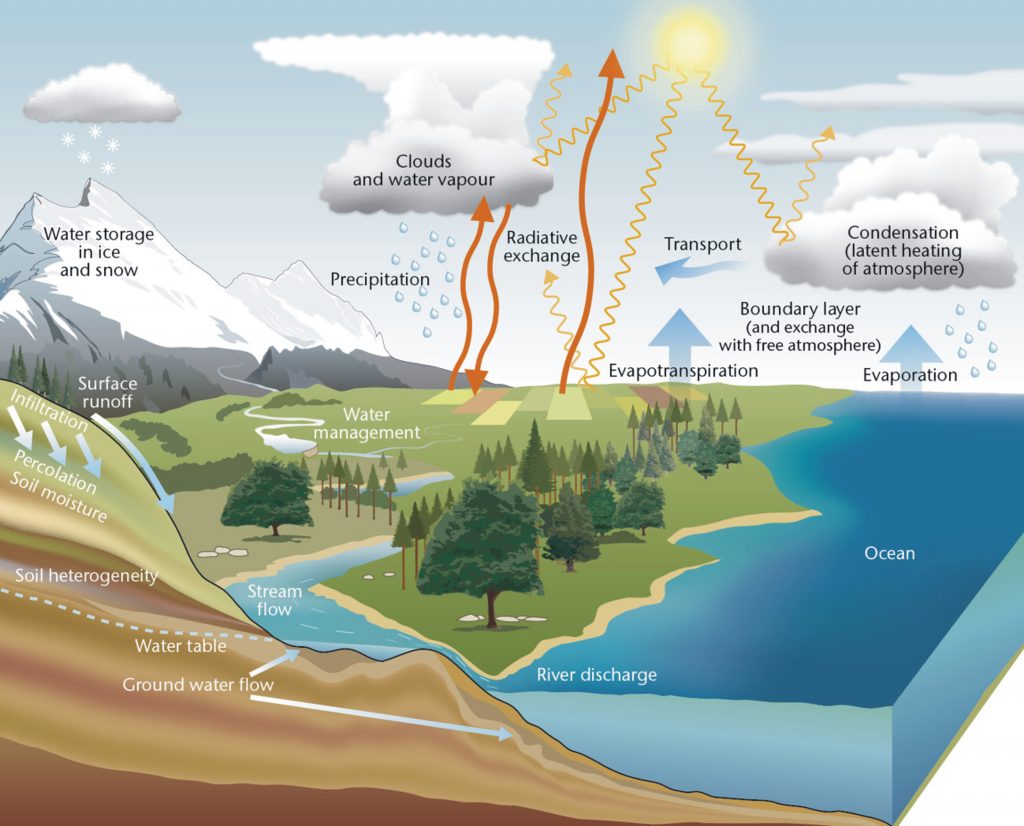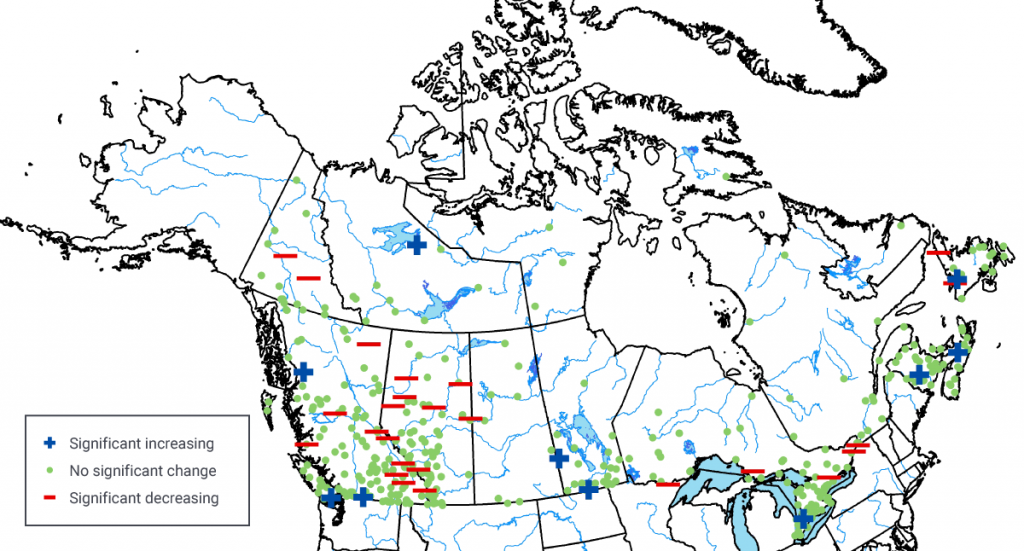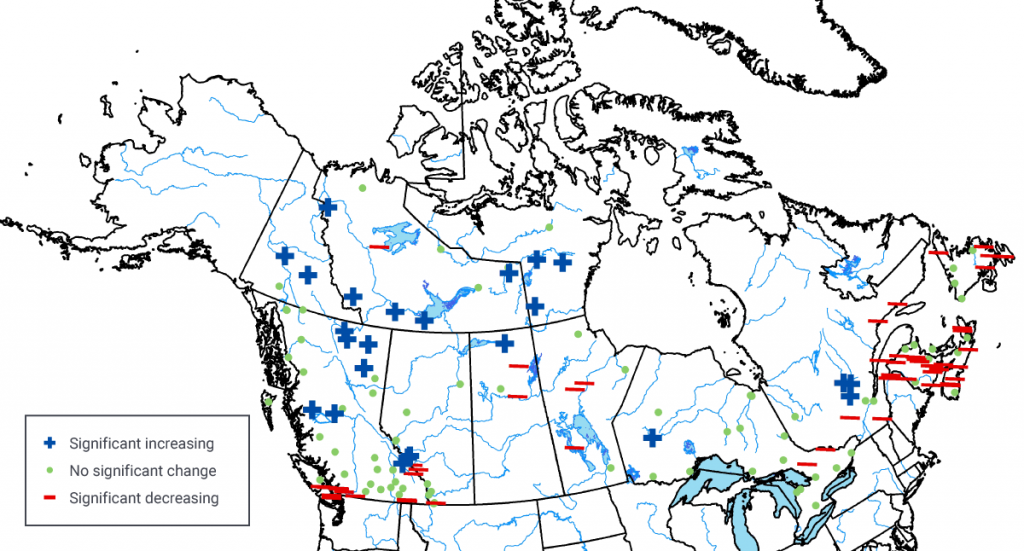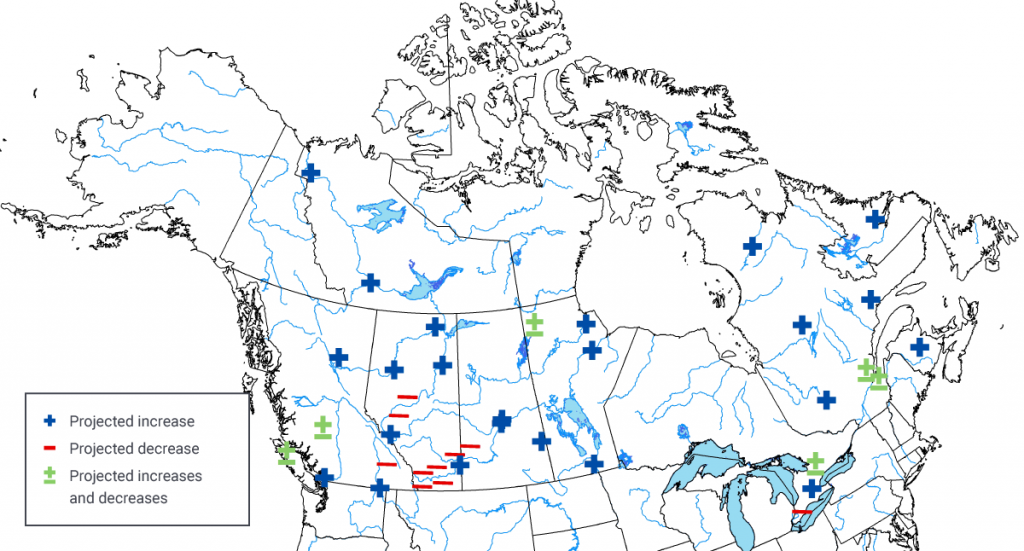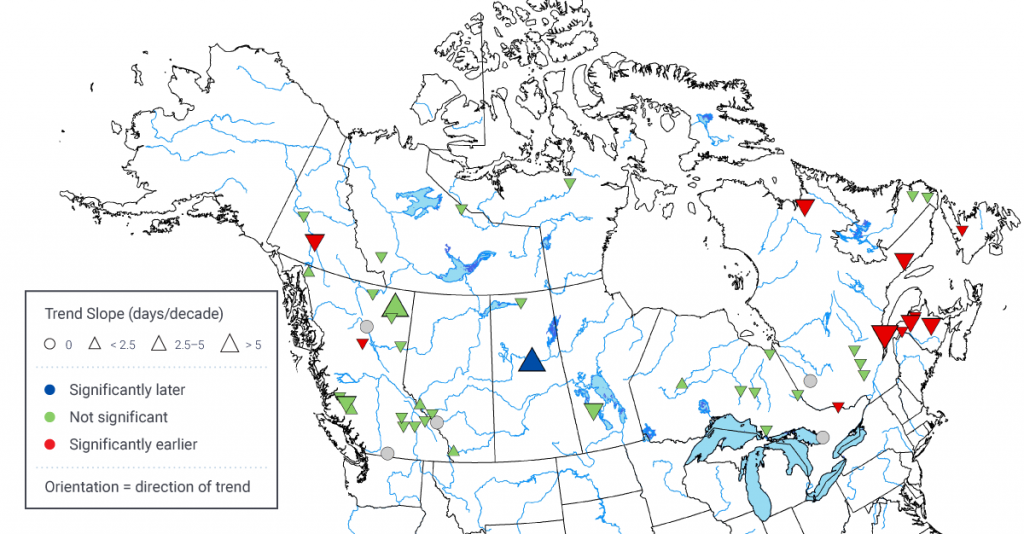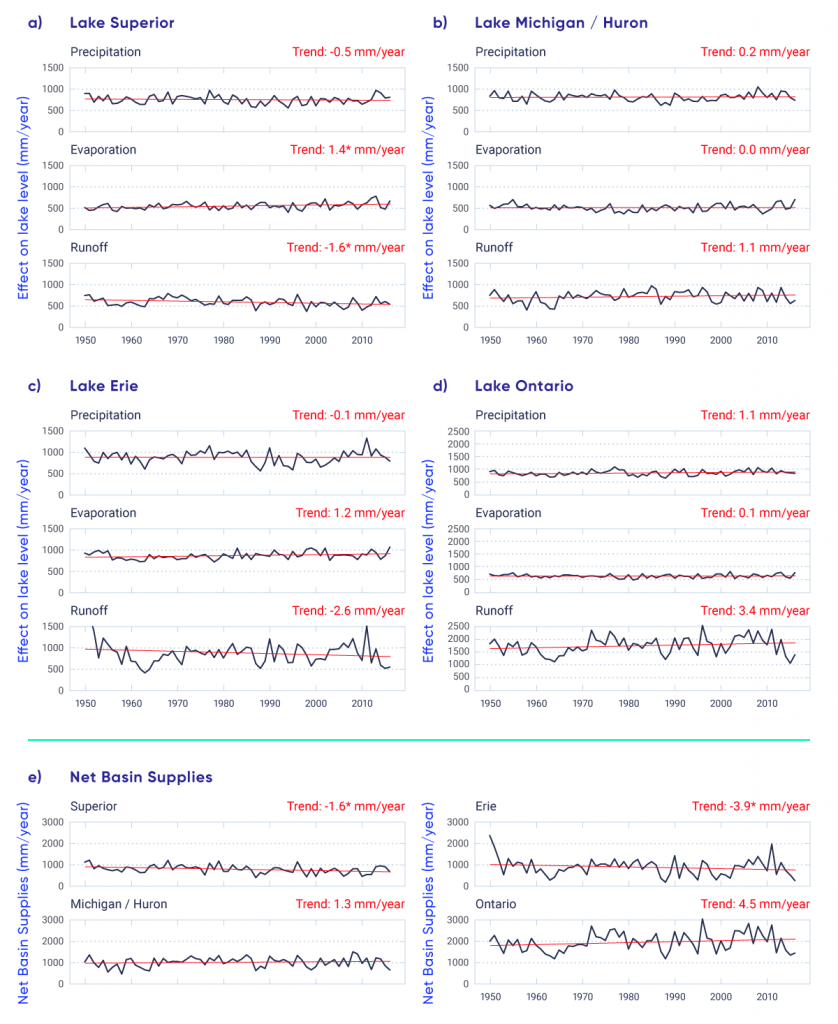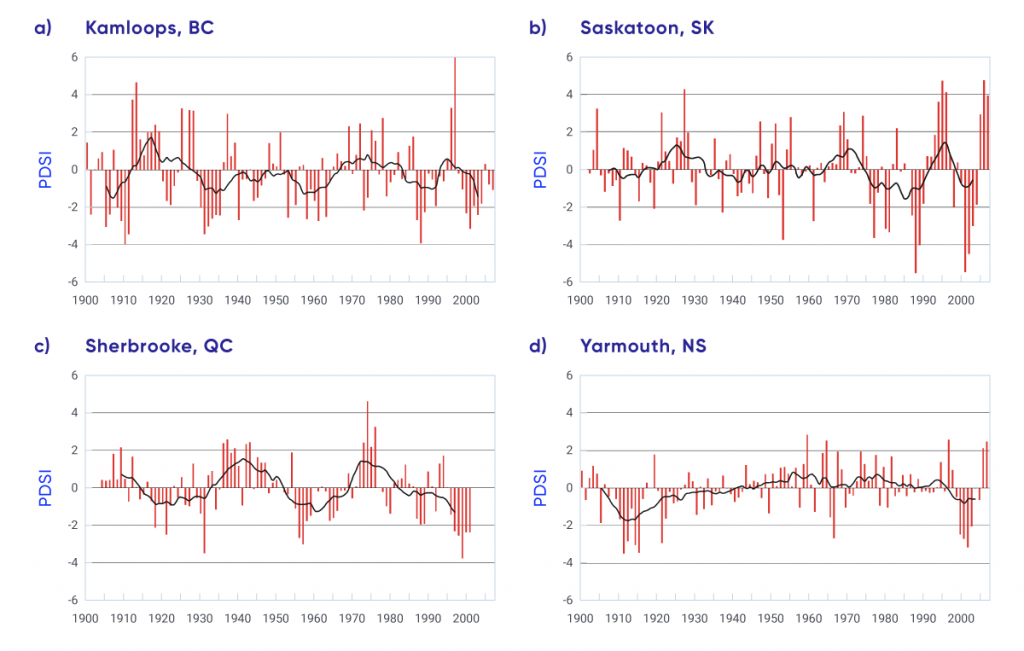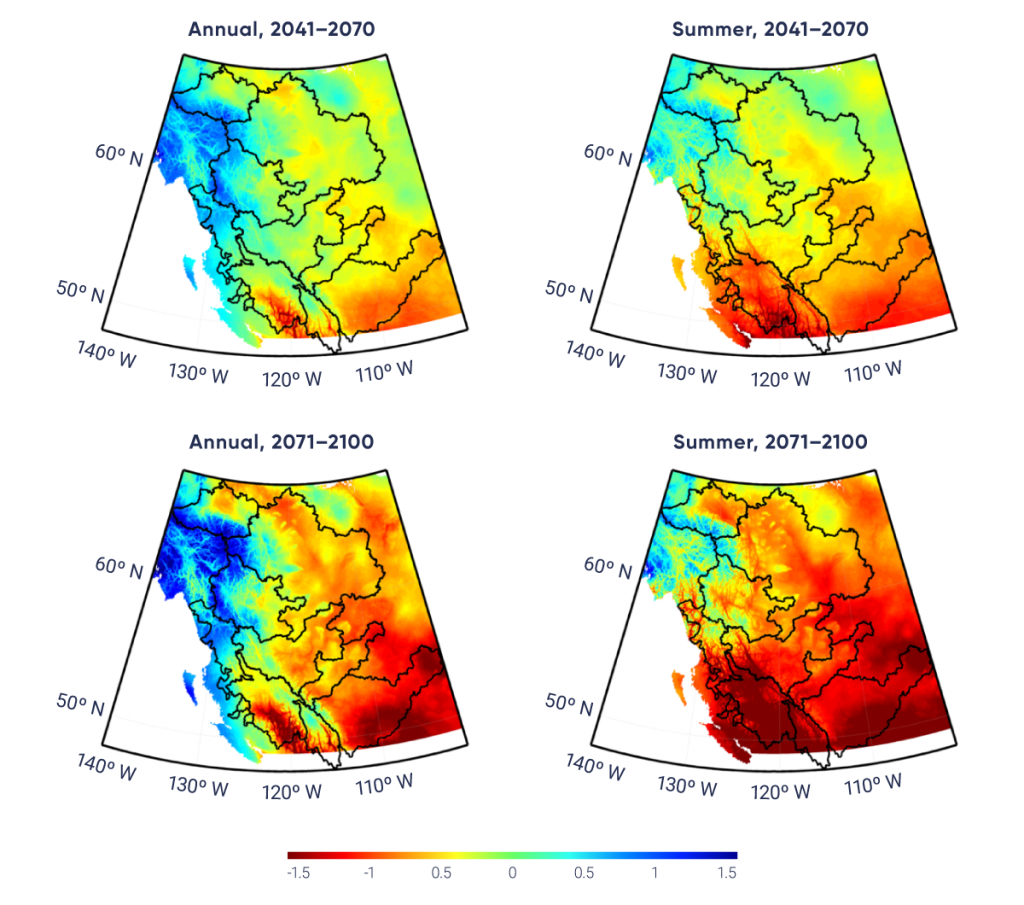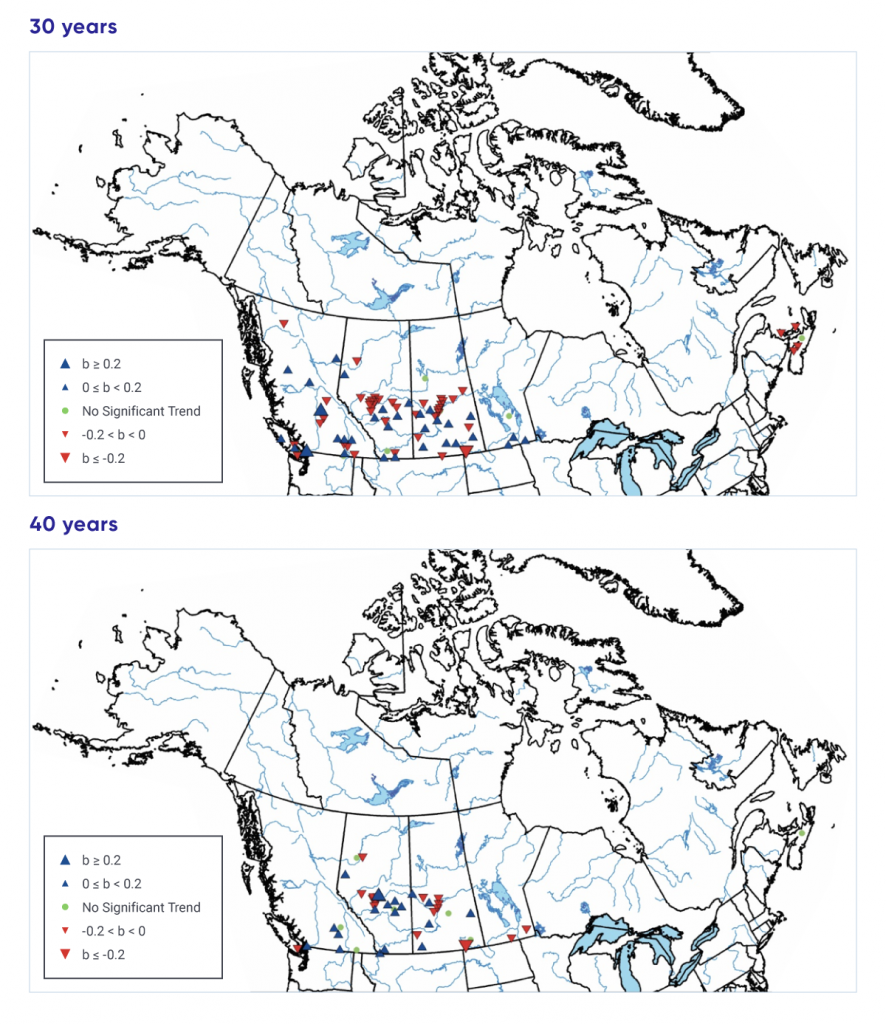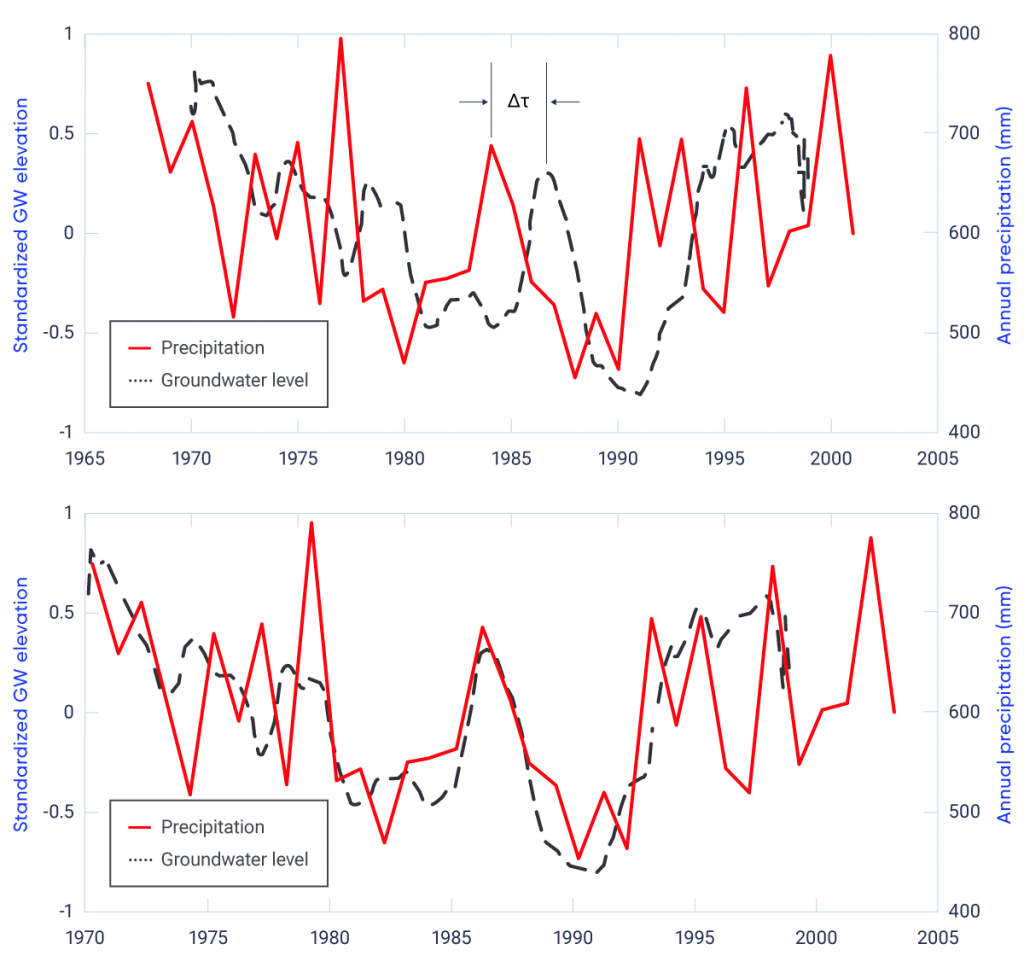A flood is the overflowing of the normal confines of a stream or other body of water, or the accumulation of water over areas that are not normally submerged. Flooding typically occurs at local to watershed scales. There are several types, including streamflow (fluvial), urban, flash, and coastal flooding (see FAQ 6.1 and, for coastal flooding, Chapter 7, Section 7.5.3; Seneviratne et al., 2012). This section assesses only streamflow-related floods, although implications for urban floods are discussed. The main causes of streamflow floods are intense and/or long-lasting precipitation, snow/ice melt, rain-on-snow, river ice jams, or a combination of these causes. Flood risk is also affected by drainage basin conditions, such as pre-flood water levels in the rivers; the presence of snow and ice; soil character (e.g., whether it is frozen, its moisture content); urbanization; and the existence of dikes, dams, and reservoirs (e.g., Bates et al., 2008).
Streamflow flooding is a common and natural occurrence, but large events are often a costly disaster for Canadians (Buttle et al., 2016; Peters et al., 2016). Given the range of potential drivers, flooding can occur any time of the year somewhere in Canada. Flooding from snowmelt and ice jams typically occurs during the spring but can also result from mid-winter melts. Floods generated by intense and/or excessive rainfall typically occur in late spring and summer, when atmospheric convective precipitation (generally brief but intense rain showers resulting from heat convection forming cumulonimbus clouds) is more common. An example of a costly event was the June 2013 southern Alberta flood, which was driven mainly by extreme rainfall (including rain-on-snow at higher elevations) associated with an intense weather system (Liu et al., 2016; Teufel et al., 2017) (see Chapter 4, Section 4.4.1.1). By contrast, ice jams on the lower Peace and Athabasca Rivers in northern Alberta in 2014 led to widespread inundation of delta wetland areas, which was beneficial to maintaining the aquatic ecosystem in the region (Peters et al., 2016). In 2014 as well, a delayed spring onset of snowmelt and an extremely wet May and June resulted in major flooding in the southeastern Canadian prairies (Szeto et al., 2015).
Different areas of Canada are classified according to the type of floods they generally experience. Across the country, 32% of 136 stream gauge sites (1913–2006) are classified as spring freshet/ice breakup flood–dominated, 42% as open-water flood–dominated (i.e., during the warm season), and 23% as a mix of these two classes. The timing of ice-influenced peak water levels and ice breakup (which can lead to flooding) has shifted earlier since the late 1960s (von de Wall et al., 2009; 2010) (see also Chapter 5, Section 5.5). There are also areas of Canada, such as the Saint John River, New Brunswick, where floodplains have been subject to more frequent mid-winter ice jams and higher April flows, both of which increase the risk of major flooding (Beltaos, 2002). However, more recent analyses of both spring freshet– and open-water flood–dominated rivers across Canada revealed that changes in magnitude, timing, number, and duration of high-flow events showed varying trends across Canada, increasing in some cases and decreasing in others. For nival catchments, this included trends toward smaller and earlier flood events; both consistent with a reduction in winter snowpack (Burn and Whitfield, 2016). In addition, examination of the seasonality of past flood regimes in 132 RHBN stations over four periods ranging from 50 to 80 years revealed the decreased importance of snowmelt flood events and the increased importance of both rain-on-snow and rainfall-driven flood events (Burn et al., 2016). To the authors’ knowledge, no studies have assessed past trends in urban flooding across Canada.
Complex interactions among the many factors that lead to streamflow floods complicate the attribution of these events to anthropogenic climate change. An event-attribution study of the 2013 southern Alberta flood determined that human-induced warming increased the likelihood of extreme precipitation, at least as large as the amount observed during this event (Teuful et al., 2017). However, since the flood resulted from a combination of many meteorological and hydrological factors, human influence could not be detected for the flood itself (see Chapter 4, Section 4.4.1.1). Similarly, an event-attribution study of the 2014 flood in the southeastern prairies was unable to detect human influence on that flood, owing to multiple contributing factors (Szeto et al., 2015).
It is expected that a changing climate will impact several of the factors affecting future streamflow flood occurrence (see FAQ 6.1). These include precipitation amount, type, and intensity; the amount and duration of snow cover; the timing and frequency of ice jams; and the potential for rain-on-snow events. However, interactions between flood-generating factors at the watershed scale lead to large uncertainties regarding the frequency and intensity of future floods (Whitfield, 2012). Some studies have suggested that the contribution of snowmelt to spring floods is expected to generally decline due to depleted snowpacks (e.g., Whitfield and Cannon, 2000; Zhang et al., 2001; Peters et al., 2006). However, there are only a few watershed-scale studies on future streamflow flooding (and/or their related factors) in Canada, which use climate model projections as input into a hydrological model. For example, depletion of the snowpack by mid-winter melt events are projected to lead to a major reduction in the frequency of spring ice jam flooding, but could increase the potential for mid-winter ice jam flooding in the Peace–Athabasca delta in northern Alberta (Beltaos et al., 2006). Two British Columbia watersheds, one on the coast and one in the interior, are both projected to experience increased flooding potential, due to more rainfall and winter rain-on-snow events in the coastal watershed and to more spring rain and more rapid snowmelt events in the interior watershed (Loukas et al., 2000; 2002). For the Red River Basin in Manitoba, snow accumulation during winter is expected to decrease, while rainfall is expected to increase during the snowmelt period. However, due to the variability among climate models, it is difficult to project whether flood magnitude will increase or decrease (Rasmussen, 2015). In the Châteauguay watershed in Quebec, spring, summer, and autumn peak flood events are projected to be reduced in magnitude under a medium emission scenario (B2), but there are large differences among the three models used (Mareuil et al., 2007). The only study of projected changes in rain-on-snow events suggested general increases in these events from November to March for most of Canada by mid-century (2041–2070) for both medium (RCP4.5) and high (RCP8.5) emission scenarios (Jeong and Sushama, 2018). To the authors’ knowledge, no studies have assessed projected changes to urban floods across Canada; however, increases in extreme precipitation are considered a factor that will affect their future occurrence (e.g., Buttle et al., 2016; Sandink, 2016).
